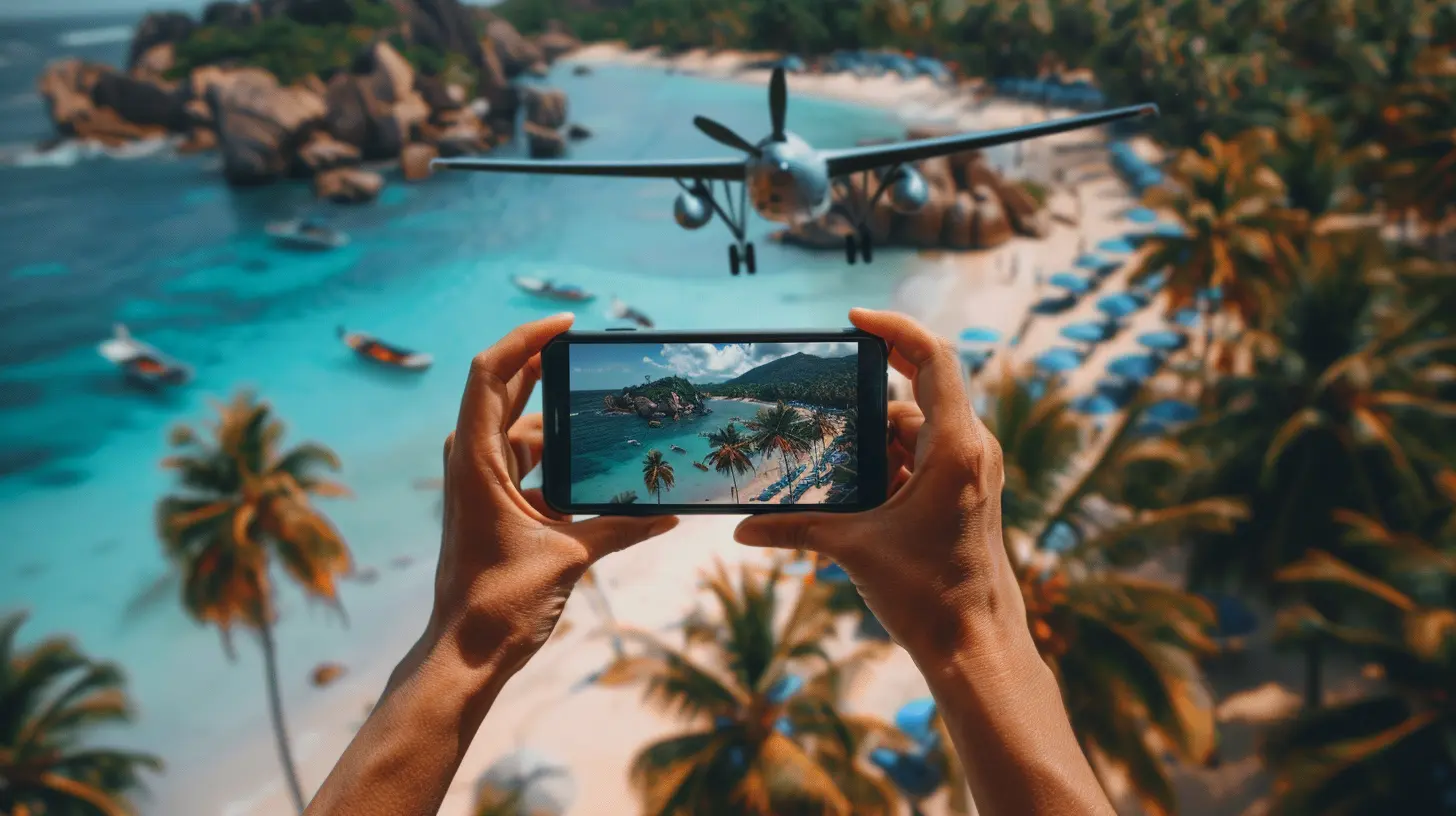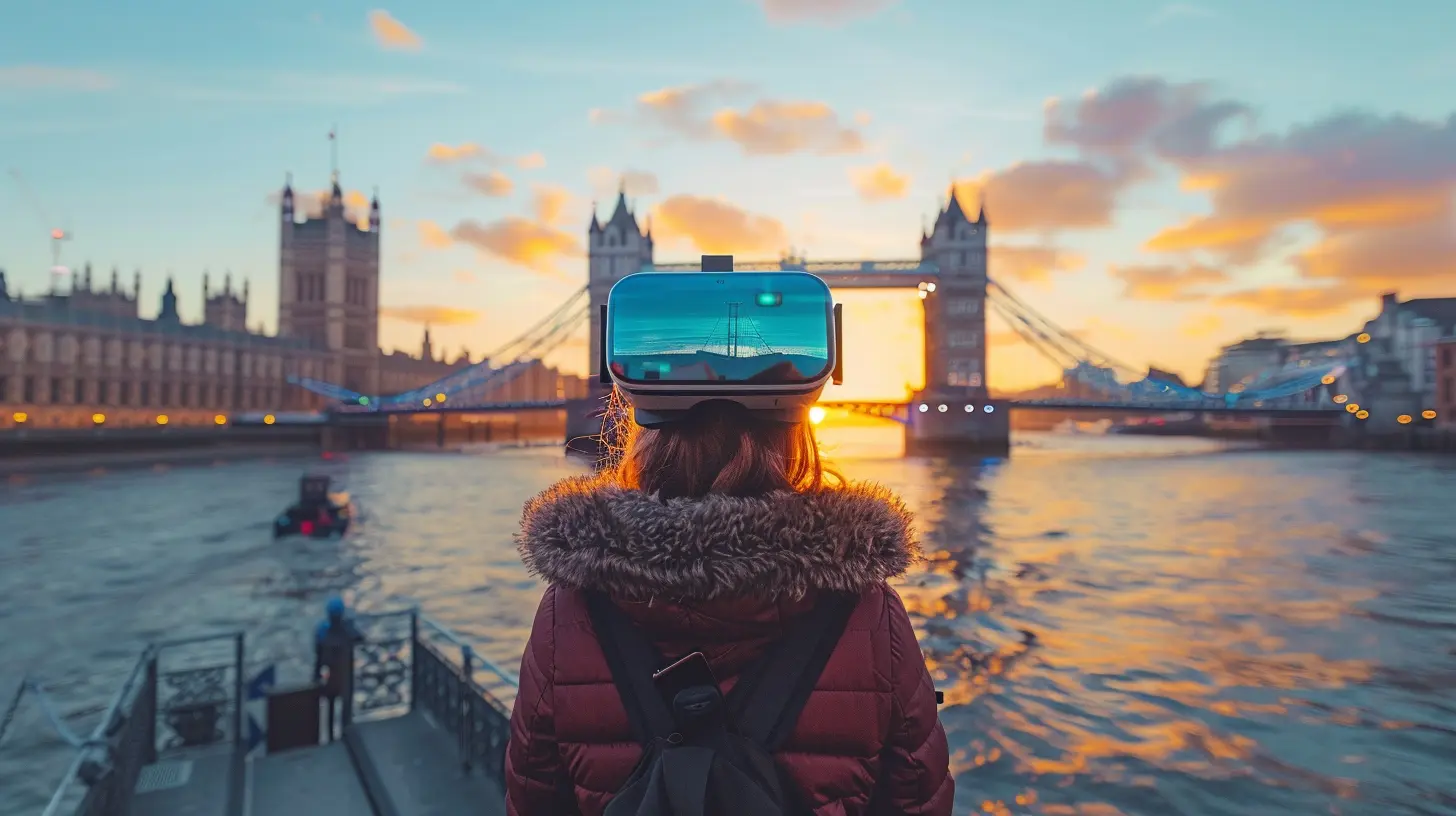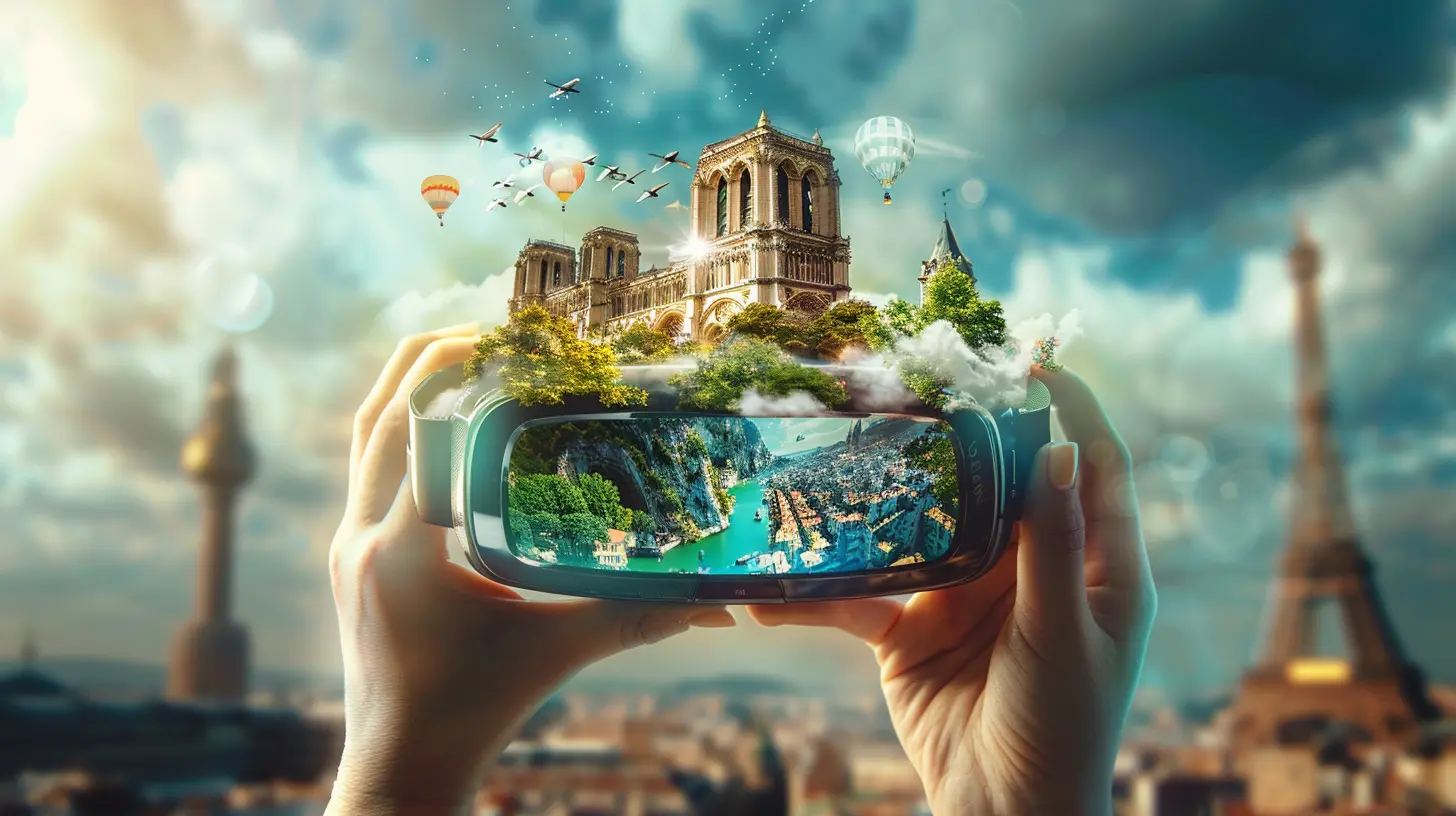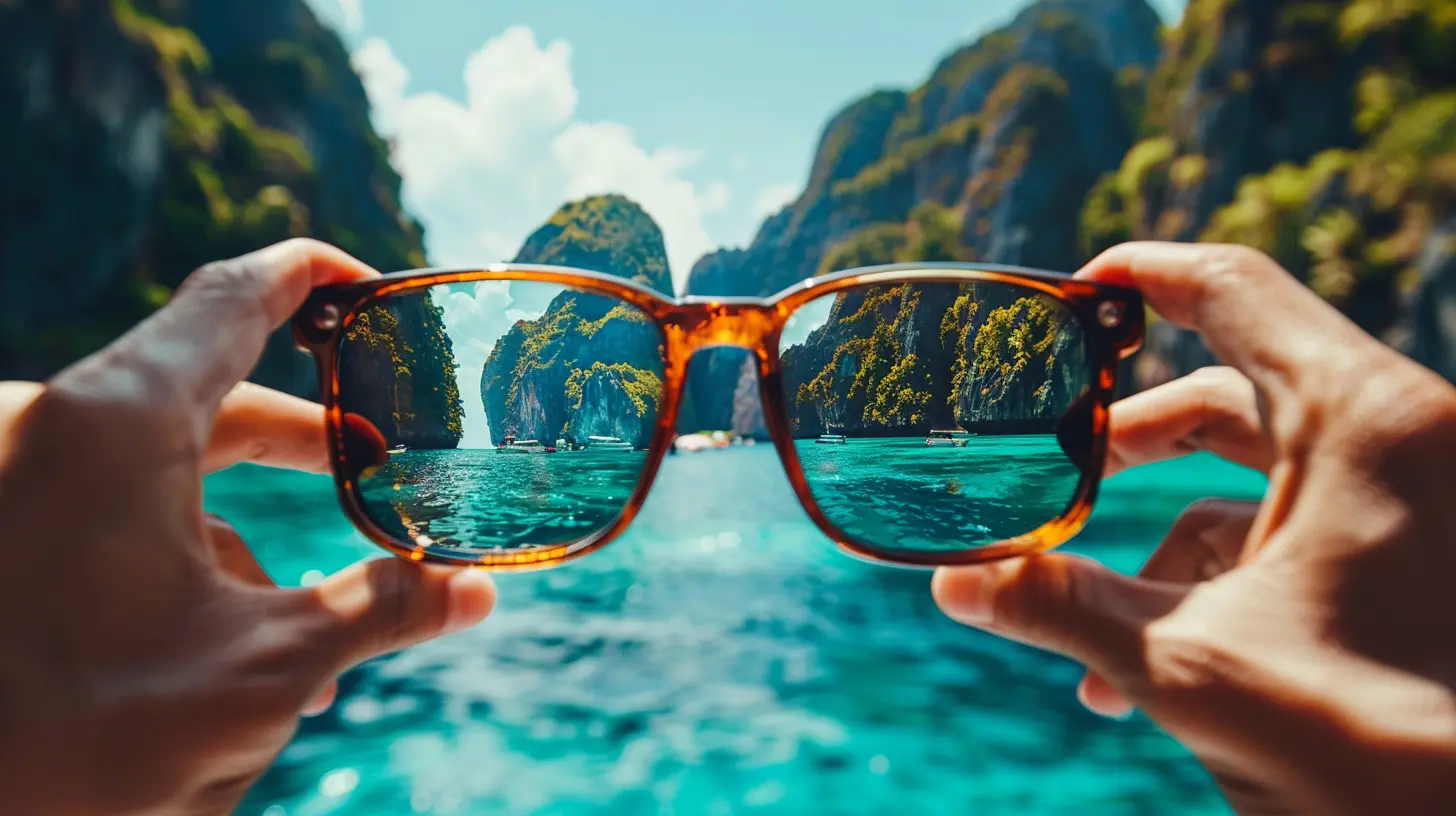How Augmented Reality is Reinventing the Travel Industry
1 November 2025
The travel industry has always been dynamic, constantly evolving to meet the needs and expectations of travelers. From the early days of printed guidebooks and maps to today’s seamless mobile apps and booking platforms, technology has been a driving force behind these changes. But now, we’re stepping into a whole new dimension. Ever heard of Augmented Reality (AR)? Of course, you have! It’s been making waves in gaming, retail, and yes, even travel.
But how exactly is AR shaking things up in the travel industry? How is it changing the way we explore the world? Let’s dive in and take a closer look at how augmented reality is reinventing travel experiences, both for travelers and the industry itself.

What is Augmented Reality (AR)?
Before we get too deep into the nitty-gritty, let’s quickly clarify what augmented reality is. In the simplest terms, AR overlays digital content—like images, sounds, or data—onto the real world. Unlike virtual reality (VR), which transports you to a completely different environment, AR enhances the real world around you. Think of it like a digital layer placed on top of what you’re already seeing.Now, how does this apply to travel? Picture this: You’re standing in front of the Colosseum in Rome. With AR, instead of just seeing the ancient ruins, your smartphone or AR glasses could showcase a 3D reconstruction of what it looked like in its prime. Cool, right?

The Role of AR in Travel
Augmented reality has the potential to reshape the entire travel experience—before, during, and after the trip. Let’s break it down into different stages of travel:1. Before the Trip: Enhanced Planning
Planning a trip can be overwhelming. Where should you go? What should you see? What’s worth your time and money? AR can make this process more engaging and interactive.Many travel companies and apps are now using AR to provide virtual previews of destinations. Imagine being able to “walk through” a hotel room or explore a tourist attraction before you even book your tickets. It’s like having a sneak peek into your future adventure without leaving your couch!
AR can also offer real-time, interactive travel guides. Instead of flipping through pages of reviews or recommendations, you can point your device at a map, and boom—up pops the most popular attractions, must-visit spots, and even restaurant reviews. Think of it as a personal tour guide right in your pocket.
2. During the Trip: Immersive Exploration
Once you arrive at your destination, AR continues to enhance your experience. Want to know more about a monument or landmark? Just point your phone at it, and AR will provide detailed information, historical facts, or even audio guides. It’s like having a museum tour guide wherever you go.Some cities have already embraced AR to create interactive city tours. Instead of relying on static maps or signs, travelers can use AR apps to see digital markers that guide them through the city streets. These tours can even be gamified, turning your trip into a treasure hunt or an interactive adventure. It’s not just sightseeing anymore—it’s an experience.
3. After the Trip: Reliving the Memories
The fun doesn’t have to stop when the trip ends. AR can help travelers relive their experiences in exciting ways. Some apps allow you to create digital photo albums with AR elements, so you can revisit your journey with interactive features. Imagine flipping through your vacation photos and having an AR feature pop up to remind you of where you were and what you experienced at that very moment.
How AR is Enhancing Tourist Attractions
Beyond personal travel experiences, let's talk about how AR is transforming major tourist attractions. Museums, historical landmarks, and even entire cities are adopting AR to provide immersive and educational experiences for visitors.1. Bringing History to Life
One of the most exciting applications of AR in the travel industry is the ability to bring history to life. Historical landmarks, while beautiful and intriguing, can sometimes be difficult to fully appreciate because, well, they’re old! It’s hard to imagine what a crumbling ruin once looked like in its heyday.But with AR, you don’t have to imagine. Ancient structures can be virtually reconstructed before your eyes. For example, some AR apps allow you to point your phone at a historical site and see a 3D model of what it looked like centuries ago. You can see how people lived, what they wore, and even how they interacted with their surroundings. It’s like stepping into a time machine, but without the DeLorean.
2. Interactive Museum Exhibits
Museums are no longer just about staring at artifacts behind glass. With augmented reality, exhibits can become interactive and engaging. Want to see how an ancient tool was used? AR can show you a digital reenactment. Curious about the history of a particular artifact? Point your phone at it, and a wealth of information will appear, from videos to audio clips.Some museums have even developed AR apps that allow visitors to explore virtual art galleries. These galleries offer a deeper dive into the stories behind the exhibits, making the experience more memorable and educational.
3. Enhanced City Tours
AR city tours take the traditional walking tour to a whole new level. Instead of following a tour guide or reading plaques, AR apps allow travelers to explore at their own pace, with digital guides leading the way. These apps often include interactive elements, like quizzes or challenges, to keep users engaged.For example, in London, there’s an AR app that allows users to see what the city looked like during different historical periods. You can walk down a modern street and see how it appeared during the Victorian era or even earlier. It’s like peeling back the layers of time as you stroll through the city.

AR-Powered Language Translation
Language barriers can be one of the trickiest parts of traveling abroad. Sure, learning a few phrases in the local language is always a good idea, but let’s face it—fluency isn’t going to happen overnight. This is where AR steps in as a game-changer.Using AR translation apps, travelers can point their smartphone camera at a sign, menu, or document, and the app will instantly translate the text into their preferred language. It’s like having a real-time interpreter in your pocket! This makes navigating foreign cities, reading menus, and even chatting with locals much easier and more enjoyable.
AR language tools also help bridge the gap in communicating with locals. Some apps allow you to translate spoken language into text or even display AR subtitles in real-time. So, if you’re in a small village in Japan with no English speakers around, these tools can help you break through the language barrier without a hitch.
AR in Hotels: A New Dimension of Guest Experience
Hotels are getting in on the AR action too. AR is being used to elevate the guest experience and make stays more interactive, personalized, and convenient.1. Virtual Room Tours
Planning on booking a hotel? Why rely on static images when you can take a virtual tour instead? Some hotels are using AR tools to allow potential guests to explore rooms in 3D before making a reservation. It’s one thing to read about a “spacious suite with a view,” and another to actually see it for yourself. This immersive experience helps travelers make more informed decisions and ensures there are no unpleasant surprises upon arrival.2. Interactive Hotel Rooms
Some forward-thinking hotels have already begun integrating AR features directly into their rooms. Guests can use their smartphones or AR glasses to access virtual concierge services, interactive maps of the hotel, or even local attraction guides. Want to know where the best coffee shop is? Just point your phone at the hotel map, and an AR marker will pop up with directions.Imagine checking into your hotel room and having a virtual assistant pop up in AR to guide you through the amenities, show you how to control the room’s smart features, or recommend nearby restaurants. It’s like having a personal butler, but without the awkwardness of asking someone for help.
3. AR-Powered Entertainment
Hotels are also using AR to enhance in-room entertainment. Some hotels have introduced AR-enabled games, virtual city tours, and even AR art exhibitions that guests can enjoy from the comfort of their rooms. Bored during a rainy day on vacation? Just fire up the AR app and explore a virtual world from your hotel bed.
The Future of AR in Travel
So, where is all this headed? Well, the potential for AR in the travel industry is virtually limitless. As AR technology continues to advance, we can expect even more immersive and personalized travel experiences. Imagine AR glasses that provide real-time translations, historical reconstructions, and interactive guides all at once. Or AR-powered travel apps that adjust recommendations based on your preferences and behavior.In the future, AR could become an essential part of the travel toolkit, just like smartphones and GPS are today. It’s not hard to imagine a world where AR enhances every aspect of travel—from planning and navigating to exploring and sharing.
Conclusion
Augmented reality is no longer just a futuristic concept—it’s here, and it’s changing the way we travel in ways we couldn’t have imagined just a few years ago. From enhancing travel planning and making exploration more interactive to transforming the hotel experience and breaking down language barriers, AR is making travel more immersive, convenient, and fun.As this technology continues to evolve, the travel industry will undoubtedly see even more creative and exciting applications of AR. So, whether you're a globetrotter or an occasional vacationer, one thing’s for sure: Augmented reality is set to make your future travels unforgettable.
all images in this post were generated using AI tools
Category:
Augmented RealityAuthor:

Gabriel Sullivan
Discussion
rate this article
1 comments
Zander Cannon
Augmented Reality enhances travel experiences by providing interactive information and immersive storytelling, transforming tourism engagement.
November 2, 2025 at 3:21 AM


